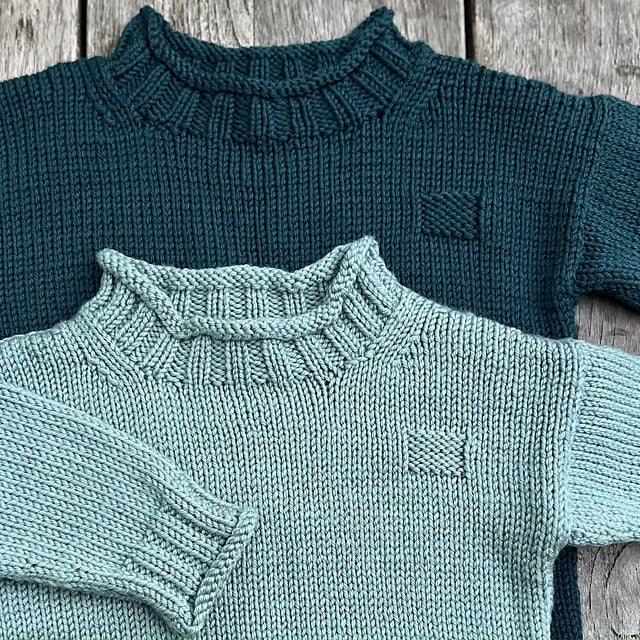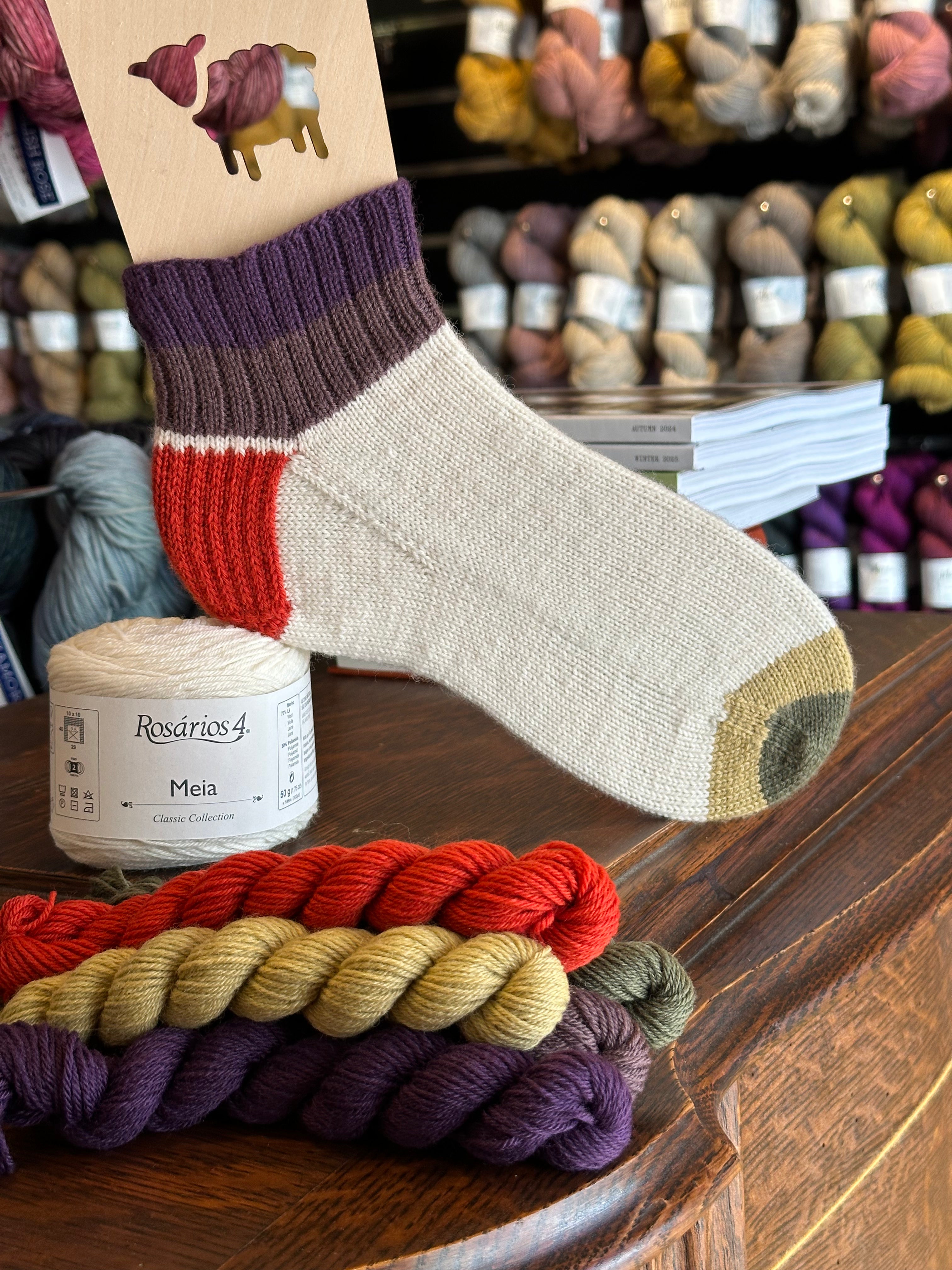Caring For Your Knits

When it comes to taking care of our knitwear, there are some really important tasks to consider before storing away items for long periods of time. With the warm weather finally arriving, many of us are starting to reach past our sweaters for lighter-weight knitwear. To make sure those sweaters, hats, and scarves are ready to wear next time cooler temps arrive, we recommend taking these steps to keep your knitwear looking fresh and fabulous year round.
All About Pilling
Pilling in knitting refers to the formation of small, fuzzy balls of fibres on the surface of a garment. This is a common surface defect caused by friction and abrasion during normal wear and washing.
Friction from rubbing occurs when parts of a garment rub against each other (or against external surfaces. Softer, shorter, and less twisted fibres tend to pill more because the ends work themselves out of the yarn more easily. Loosely knitted items pill more than tightly knitted ones because there is more room for the fibres to move and rub against each other. Agitation in washing machines can increase friction, causing more pilling. Using harsh detergents can also weaken fibres, making them more susceptible to pilling.
Pills can be effectively removed to restore the look of your garment. Always lay the item flat on a stable surface before de-pilling.
- Electric Fabric Shavers: These small, battery-operated devices use rotating blades to safely cut pills from the fabric surface and collect them in a compartment. They are considered one of the most effective and safe methods for most knits.
- Sweater Combs: These manual tools gently scrape the pills off the fabric. They are excellent for delicate fabrics like cashmere and fine wool.
- Pumice Stones (Sweater Stones): These rough, natural stones can be lightly rubbed over the surface to pick up pills. This method can be a bit messier than others, leaving stone residue, but is effective for tougher pills.
- Disposable Razor: In a pinch, a disposable razor can be used very gently to shave the pills off the fabric. Hold the fabric taut and use light, short strokes to avoid cutting the garment.
- Hand Removal / Scissors: For a few large pills, you can snip them off carefully with small scissors or pick them off by hand. Avoid pulling the pills, as this can stretch the fabric and bring more fibres to the surface, encouraging more pilling
Repairing Holes
A small hole in a knit fabric can quickly unravel and expand due to the interconnected loop structure of the knit. The loops are easily caught on other objects or further weakened by movement. Repairing it when it is small is significantly easier and results in a neater, less visible mend than trying to fix a large, gaping hole.
- Gently trim any frayed or loose threads around the hole, and place a darning mushroom or suitable curved object under the hole to keep the surrounding fabric stable and slightly stretched.
- Thread your needle with the matching yarn. Anchor the yarn a few stitches away from the hole on the wrong side of the fabric to secure it.
- Using your needle, trace the path of the original yarn, essentially "drawing" the missing stitches with your new yarn.
- Pick up any adjacent dropped stitches with a crochet hook or the needle and place them on a needle if possible to prevent further unraveling.
- Weave the new yarn in and out of the surrounding, intact stitches (above and below the hole), making sure to catch all raw loops. Adjust tension so the mend matches the rest of the fabric.
- Weave in the yarn tails on the wrong side of the work and trim the excess
Washing and Blocking Knitwear
Washing hand-knit items is essential for fibre preservation, preventing pest damage, maintaining shape, and for keeping items clean and fresh. It is a good idea to refer to the original yarn label for fibre content and care symbols. This is especially crucial for untreated wool which can felt with heat and agitation.
- Fill a clean sink, basin, or bathtub with cool or lukewarm water. Add a mild, wool-specific liquid detergent (e.g., Eucalan or Unicorn Clean). Avoid harsh detergents, bleach, and fabric softeners, as these can damage the fibres.
- Gently submerge the item in the water, pressing it down to ensure it is fully wet. Do not agitate, scrub, or twist the garment. Allow it to soak for at least 10–20 minutes to loosen dirt.
- If you are not using a no-rinse soap, drain the soapy water and refill the basin with clean, cool water. Gently press the item to help the clean water penetrate. Repeat this process until the water runs clear and all soap is gone.
- Carefully lift the item, supporting its weight to prevent stretching. Gently squeeze out as much water as possible without wringing or twisting. To remove more water, lay the item flat on a clean, dry bath towel, roll the towel up (with the item inside), and press firmly (you can even kneel or step on the roll).
- Transfer the item to a new dry towel or a mesh drying rack. Gently ease it into its original shape and measurements. Dry flat, away from direct sunlight or heat sources, which can cause damage or yellowing. Flipping the garment after 12 hours can help the other side dry completely
Moths And Knitwear
- Always wash items before long-term storage to remove moth attractants.
- For seasonal or long-term storage, use sealed plastic containers or vacuum-sealed bags to create a physical barrier that moths cannot penetrate.
- Regularly vacuum and wipe down the inside of wardrobes and drawers, paying special attention to corners and crevices where eggs and larvae might hide.
- Moths hate light and movement. Regularly air out your closets and move items around.
- Shaking out garments can dislodge any existing eggs or larvae. If you suspect an infestation, you can freeze sealed items for a minimum of 72 hours (ideally a week) or use high heat (e.g., in an oven at a low temperature, or hot wash if the fabric allows) to kill all life stages of the moths.
Storing Knitwear
The best way to store knitwear is by folding the washed, blocked and dried items flat in a cool, dry, and dark location. Avoid hanging to prevent stretching and use airtight containers for long-term (off-season) storage.

We hope you found this helpful!










Leave a comment